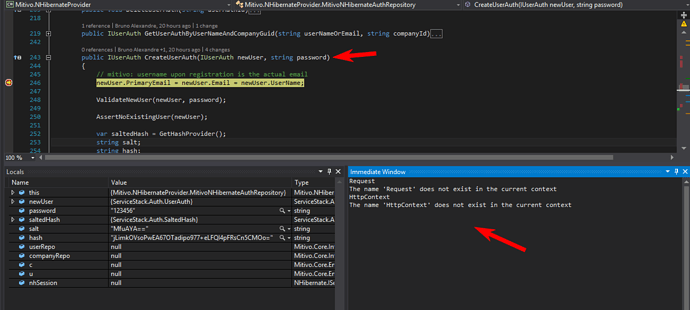Hi @mythz
I’m not saying you’re wrong, but I have no access to the HttpContext object inside the Repository:
That’s why I’m having some hard time to get data from the registration.
and btw, seting any Meta data in the Repository like:
newUser.Set(user.Guid);
var nhSession = GetCurrentSessionFn(sessionFactory);
nhSession.Save(new CustomUserAuthNHibernate(newUser));
I still get
{
...
"meta": null
}
